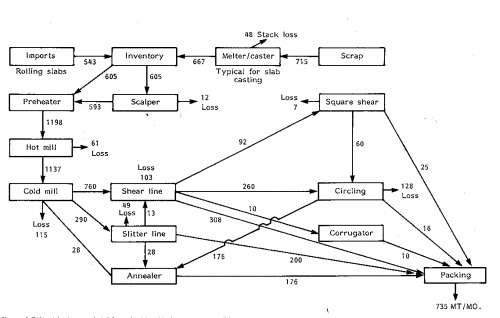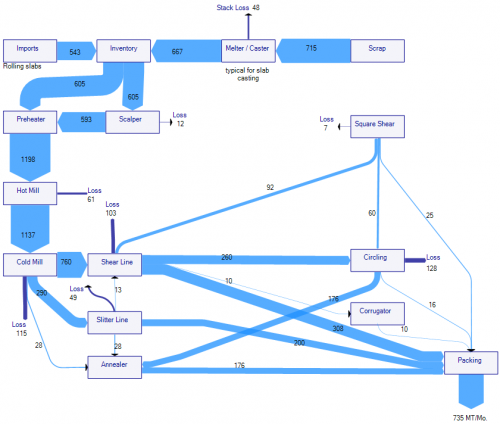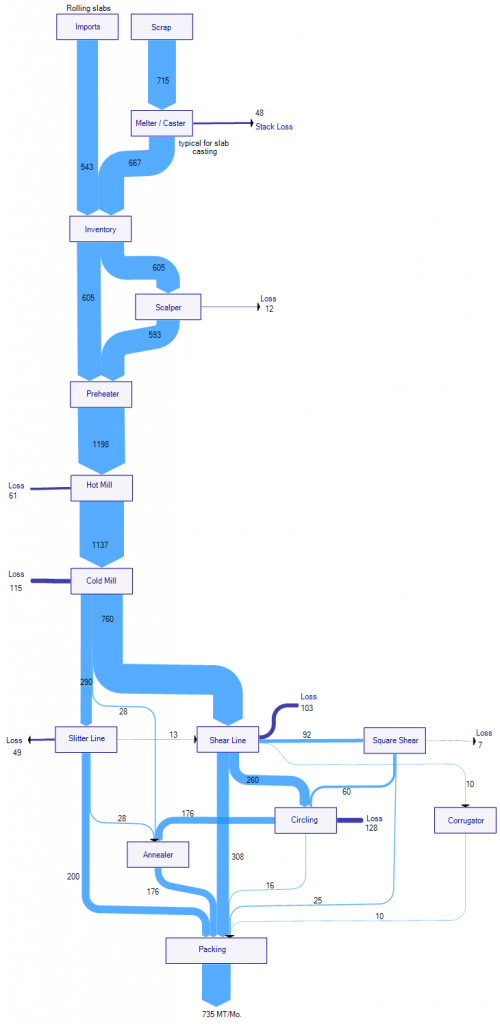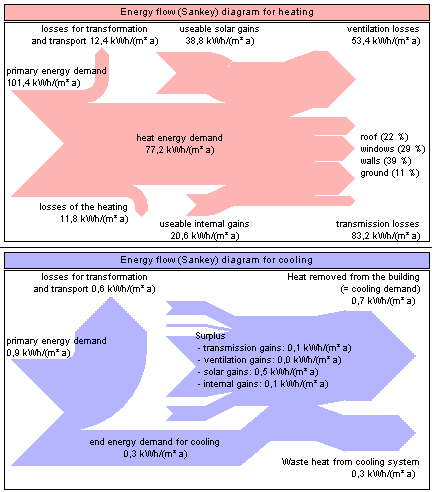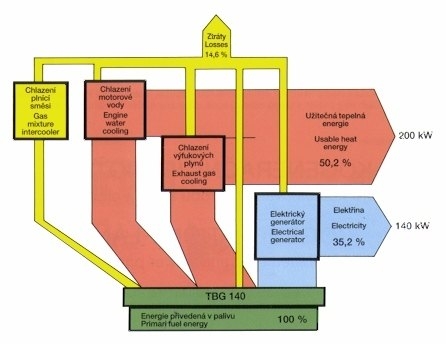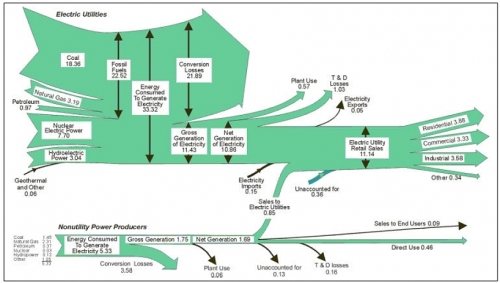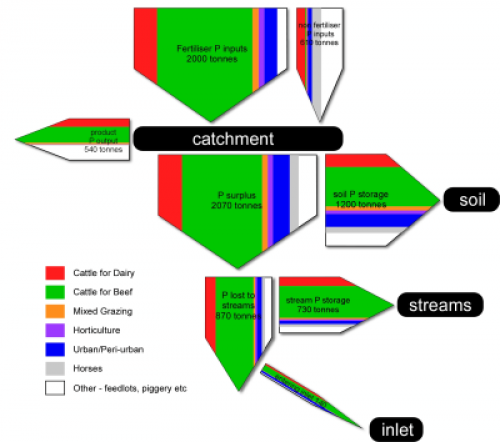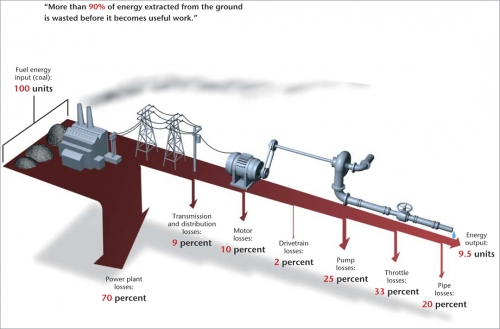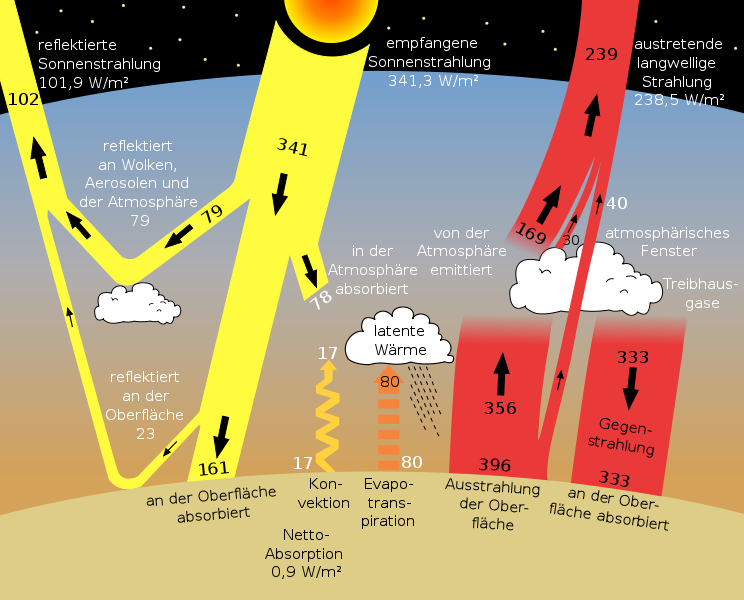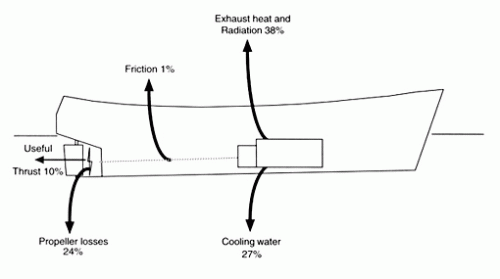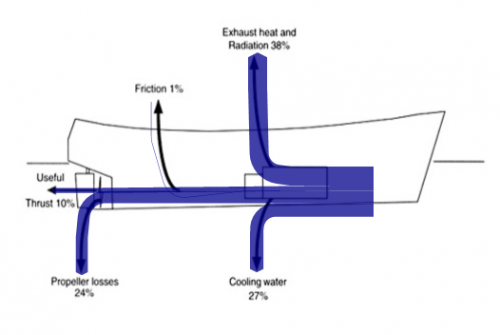This 1996 article on Energy Conservation Management (source: Charles M. Gottschalk: Industrial Energy Conservation, UNESCO Energy Engineering Series, John Wiley & Sons Ltd., Chichester, West Sussex, UK, 1996) has a Sankey diagram of the energy flow in a boiler system (will post that one separately one day, maybe). It also features the following steel factory material flow chart (flows are in MT per month, although the text says it is in tons/month):
I took this and converted it to a Sankey diagram, to better comprehend where the real material flows are, and where the biggest losses occur. Losses are distinguished from the other material flows with a
darker blue color. I actually produced two different versions: the first one sticks very closely to the original layout of the processes, the second one has more of a top-down flow direction.
I was unable to hook the flows to the corner of a process node as it is done in the original diagram (e.g. flow from cold mill to slitter line), Also, the little “bridges” where the arrow from circling to annealer crosses the three other arrows, cannot be reproduced in the same way with the tool I am using.
In the second version I need more space, but I think it is much more comprehensible as it sticks to a top-down flow direction. Losses branch off sideways. I added arrow heads for very thin arrows, otherwise they would sometimes be hardly visible. I refrained from putting the units behind each value to keep it like in the original.
Seems as if I have to much spare time, but this ain’t true…
